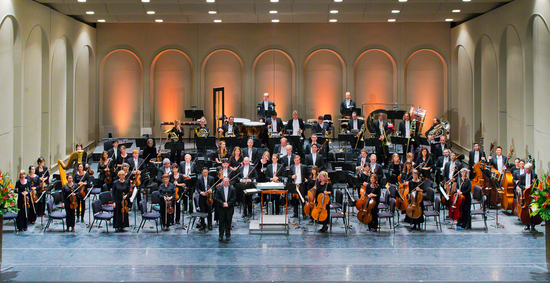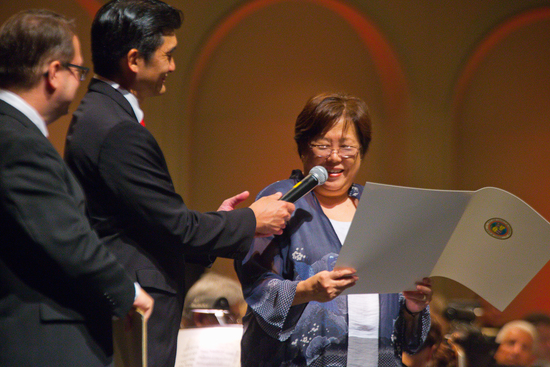It’s hard to believe it’s been five and a half years since the Honolulu Symphony Society (HSS) canceled concerts and filed for Chapter 11 reorganization in December of 2009, with Chapter 7 liquidation a year later. The death of the 104-year old institution dealt a blow to our community; however, because most of the musicians stayed in Hawaii, and thanks to the efforts of a new group of community leaders, symphonic music eventually returned.
As has been reported, the 2009-2010 Honolulu Symphony Orchestra season began with an early distribution to the HSS by the Honolulu Symphony Foundation (HSF), to eliminate debt and pay orchestra musicians for months of unpaid work completed during the previous season. These funds came at a cost, however: Local 677 had to approve an immediate 15% pay cut, the hiring of a new Executive Director, and a “realistic budget”. It soon became clear that the sacrifice was in vain (again) when the orchestra ran out of operating capital. Concert production was suspended in October 2009, following performances of only two Masterworks concerts and one Pops concert. Though attempts were made to impart revenue enhancement ideas, the Board appeared not to want to hear any of it.
Following the Chapter 11 filing, the bankruptcy judge tasked the HSS with devising a reorganization plan. The vision that the HSS leaders seemed to have was one of a deeply downsized part-time orchestra that wouldn’t resemble the ensemble that the community had come to love and support for generations. The Orchestra Committee and the Local nevertheless tried to find community leaders who could lead the organization away from the HSS’s vision; Vicky Cayetano, business leader and former Hawaii First Lady, and Mark Polivka, Vice President of an insurance company, formed a nucleus of what would become the driving force behind a new entity. The Local reached out to industry professionals; Steve Monder, recently retired Executive Director of the Cincinnati Symphony, agreed to advise the new group and offered his services at a minimal cost. JoAnn Falletta also agreed to help out in whatever way she could.
Without a recognizable reorganization plan, the HSS Board elected to file for Chapter 7 liquidation in December 2010. By this point, a few more community leaders had joined the initial group, which would form what was called a “Symphony Exploratory Committee”. This group, including business leader (and current HSO Board Chair) Paul Kosasa, played a key role in the liquidation of HSS assets when the group submitted the winning auction bid to purchase the music library—containing many rare and unique items—and several instruments.
By early 2011, the exploratory committee, now formally the new Hawaii Symphony Board, entered into collective bargaining, as it was felt that waiting any longer to plan a season could result in even more musicians leaving town. An agreement was ratified in April 2011, with a duration of three years starting with the 2011-2012 season, and a $1,000 base weekly salary for 30 weeks, rising slightly in the third year. In the summer and fall of 2011 the Board attempted to locate funding, find office space, and discuss the hiring of key staff personnel. The Board now included nine members, only one of whom remained from the previous HSS Board.
By February of 2012 it became apparent that even arriving at an accurate budget from which to plan a season was a challenge. With the only paid staff being Executive Director Monder, an operations manager, a receptionist, and the music librarian, key positions—in development, marketing, and, most critically, finance—either remained open or were filled by community volunteers. Because budget numbers were fluid, the Board operated in a vacuum while trying to plan for the future, making it reluctant to schedule concerts. However, key individuals indicated they would leave unless a season was scheduled that year.
Ultimately, a short season of 16 weeks was planned and scheduled for mid-March to early July of 2012. This was made possible in part by the decision of the HSF to again advance its annual distribution (typically around $400,000 in earnings/appreciation each year), which would otherwise have come at the end of the calendar year.
During the two-and-a-half year gap between the end of the Honolulu Symphony and this beginning of the new Hawaii Symphony, the HSO musicians did have one source of financial relief: the Hawaii Opera Theater Company, which previous to 2009 had always subcontracted their services, produced Grand Operas in each of the seasons following the symphony shut-down, thus allowing many, if not all, of them some employment.

HSO with conductor and former HSO Principal Timpanist Stuart Chafetz
Photo credit: Brad Goda Photography
The first concert of the short season, Sunday, March 4, 2012, was held in the Blaisdell Concert Hall to a nearly packed house. The audience gave three standing ovations: the first when the musicians walked out on stage; the second when Monder appeared after intermission; and the third (and longest) after the last piece on the program, Beethoven’s Fifth Symphony. Maestro Naoto Otomo shook the hands of every musician on stage, while young musicians from the Youth Symphony distributed leis.
Following the orchestra’s welcome return, the Board decided it needed more time to produce the 2012-2013 season, so plans to start in the fall were put on hold. After another year without any concerts (though with health coverage continuing this time), the Board decided the symphony could only move forward under one of several scenarios for the fall of 2013, all of them contingent upon the HSO receiving Grant-in-Aid monies from the state. In the end, the HSO received half of the maximum possible $900,000, so HSO management, the Board, and the Local agreed on a 12-week season, reduced from 16 weeks in 2011-2012. This modified agreement, with a budget for 2013-2014 of around $3 million (roughly half of previous Honolulu Symphony budgets), also called for 14 weeks in the current (2014-2015) season, and 16 weeks in the 2015-2016 season.
With the modified CBA in place, the Board authorized Monder to hire full time marketing and development staff. Monder later agreed to remain as Senior Advisor to the HSO Board and management when his successor, HSO hornist Jonathan Parrish, took over as Executive Director. Parrish in turn hired a full time Financial Officer in December 2013. At last the organization had professional financial, marketing, and development data with which to guide its course. The 2013-2014 season ended with a balanced budget, thanks to relatively healthy ticket sales and the implementation of new marketing strategies and a new ticketing system.
One of the most welcomed aspects of a resumed symphony season was the return of “Beethoven 9” concerts in December that had been an annual tradition prior to bankruptcy. The performance on December 23, 2013 was sold out, and the tradition continued in December 2014 with two well-attended performances.
In the current season, year two of the amended CBA, the successful fall season started off in September with a concert honoring the 50th anniversary of the opening of the Blaisdell Concert Hall. This gala event featured music performed 50 years earlier: the “Nocturne” and “Wedding March” from A Midsummer Night’s Dream, and Tchaikovsky’s Romeo and Juliet Overture. Memorabilia from the mid-‘60s was displayed in the lobby, including bound programs, photos, a copy of a musician’s contract for the week ($7 per rehearsal, $14.50 per concert!), plus a schedule of the week’s festivities in September 1964. Of the season’s 14 weeks, 12 contain Masterworks concerts; although subscription levels so far are not quite as high as in 2013-2014, average concert revenue is up by 5%.

Parrish, Kosasa, and Honolulu City Managing Director Ember Shinn, reading a Mayoral Proclamation in honor of the 50th Anniversary of the opening of the Neal Blaisdell Concert Hall
Photo credit: Brad Goda Photography
Symphony Pops also returned with a first concert “Hooray for Hollywood!” in November, followed by a sold out concert on January 23 that featured Disney film music. Two more Pops concerts are scheduled for March and May 2015. Education/Outreach has also resumed with symphony ensembles visiting Oahu schools in February.
We remain cautiously optimistic about the future of the symphony. Of critical importance for the organization going forward is to nurture and grow the depth of the HSO Board of Directors. And, while many good things are happening, we don’t yet have anything close to the level of employment we once had, nor the number of performances that the community had enjoyed for so many years. We all want that level of service to return as quickly as possible.






Hawaii Symphony Orchestra Naoto
[…] ime to produce the 2012-2013 season, so plans to start in the fall were put on h […]